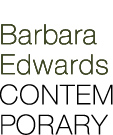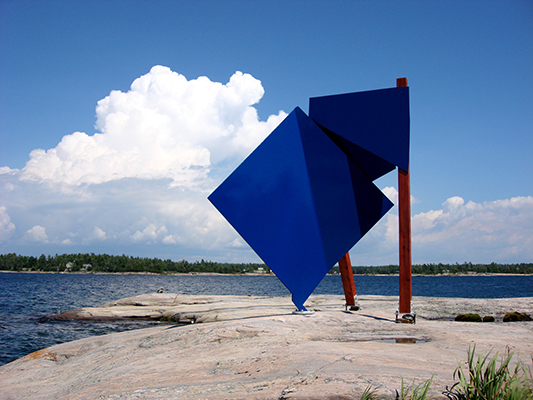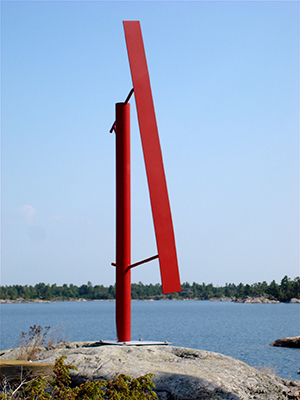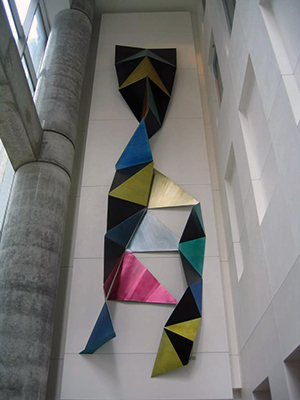Murray was raised in Saskatoon, and studied at the University of Saskatchewan’s Regina College School of Art, also attending the legendary workshops at Emma Lake led by Jack Shadbolt, Barnett Newman, and Clement Greenberg. In 1958 he received a grant to study at the Instituto Allende de San Miguel in Mexico, and in 1960 he travelled along the Pacific Northwest coast; exposures to new landscapes and cultures that shaped his developing aesthetic. They sparked an interest in Pre-Columbian and Indigenous art, common ground with Newman that made for a close and influential artistic friendship. Murray settled in New York in 1960, an exciting time for abstract sculpture, pioneered by David Smith and Alexander Calder. Enthusiastic support from influential dealers – Betty Parson in New York and David Mirvish in Toronto – established his presence and led to many important public commissions.
Murray’s sculptures are most renowned for the use of bright enamel and steel sheeting – dynamic gestures that actively create space and consider the individual viewer. His use of colour calls attention to the effects of light and shade in a painterly way, creating a lively tension between surface and volume. When placed in landscapes, the sculptures acutely affect viewers’ perceptions of the surroundings. One of Murray’s earliest forays into nature was Ferus (1963), a bright red form that began his “cylinder and plank” series, installed on the rocky shores of Lookout Island to which he continues to return each summer.
http://www.lippincottsculpture.com/art/gallery.html
Lillooet, 2008
aluminum painted blue and cedar dyed red
11 ft high
Private Collection, Snug Harbour, ON
Ferus, 1963
painted steel
12 ft high
Georgian Bay, ON
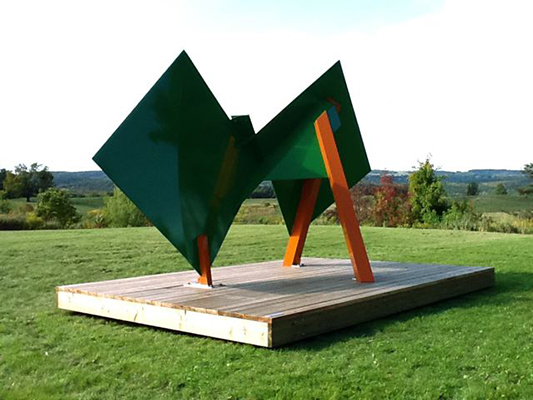
Kilgorie, 2011
painted aluminum
9 x 16 ft
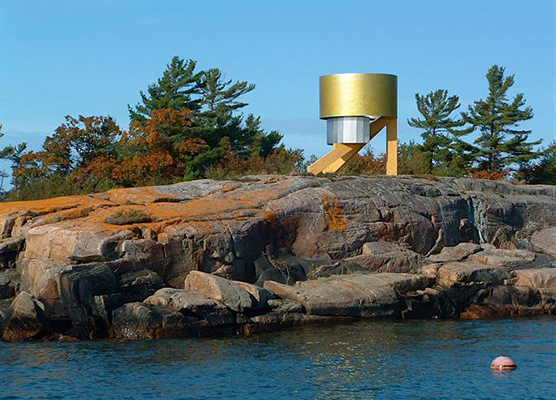
Kawaatebiishing, 2003
cedar, aluminum, steel
120" x 110" x 86"
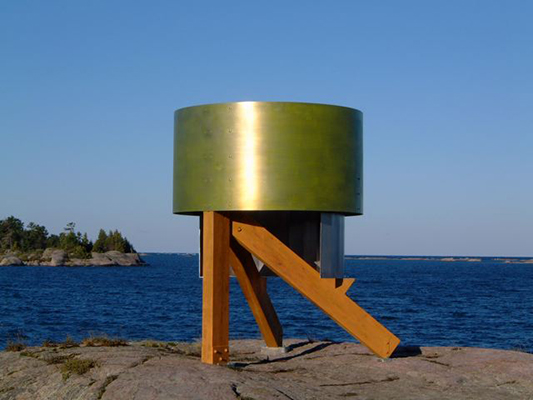
Kawaatebiishing, 2003
cedar, aluminum, steel
120" x 110" x 86"
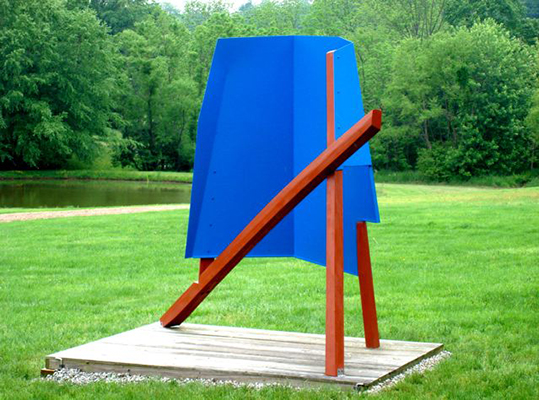
Nayaushe, 2000
aluminum and steel
120" x 121" x 76"
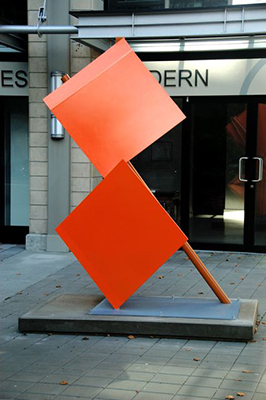
Untitled
aluminum
Installed in front of Winchester
Galleries Modern, Victoria, BC
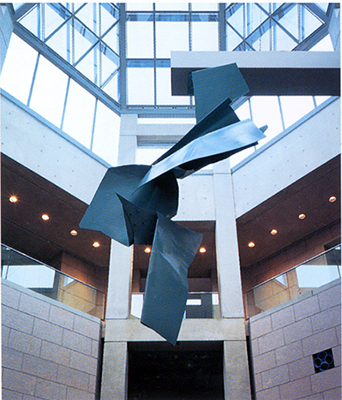
Cascade, 1983
painted aluminum, 22 x 11 ft
University College Art Collection, University of Toronto
(photo shows work installed at National Gallery of Canada, Ottawa)
Mbishkaad, 2004
aluminum with solvent dyes and synthetic lacquer , 30 x 8 ft
Installed at One King West, Toronto, ON
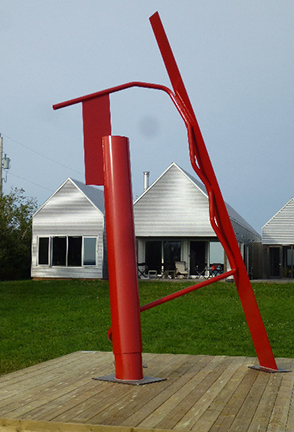
RUA, 2014
steel and stainless steel painted red, 15' high
collection of Maureen and Douglas Leahey, Pugwash NS
Click here to view other works
